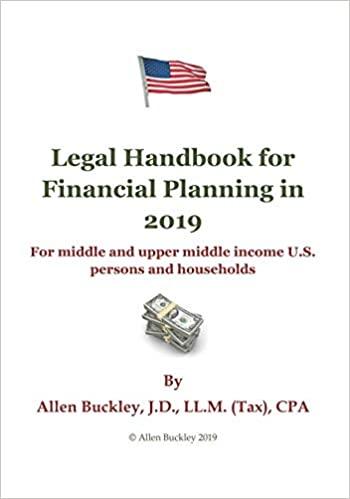Question
You signed on an amortized loan. Under the loan, you will borrow $1000 at an annual rate of 6% for 3 years. Lets generate an
You signed on an amortized loan. Under the loan, you will borrow $1000 at an annual rate of 6% for 3 years. Lets generate an amortized loan table showing payment scheduling.
To generate the amortized loan table, we need to understand a same amount of payment (composed of interest charge and principal).
Using PV of Ordinary Annuity equation, we can calculate an annual payment. C = 374.11.
At the 1st year, you are required to pay 374.11. Out of 374.11, 60 (=1000 x 0.06) will be used to pay an annual interest charge. The remaining 314.11 (=374.11- 60) will be used to pay a principal loan amount. Thus after 1st year, your principal loan amount will be 685.89 (=1000 314.11). It will be rounded up to 686 which is your principal loan at the second year.
At the 2nd year you will again pay 374.11 which will cover 6% of 686. Then new remaining will reduce principal loan. This payment will continuously happen at the 3rd year. As you can see in the table, at the 3rd year, you will pay off all loan.
Findings: as time goes on, interest payments reduce but principal payments increase.
What are the step to calculate this equation on a financial calculator?
Step by Step Solution
There are 3 Steps involved in it
Step: 1

Get Instant Access to Expert-Tailored Solutions
See step-by-step solutions with expert insights and AI powered tools for academic success
Step: 2

Step: 3

Ace Your Homework with AI
Get the answers you need in no time with our AI-driven, step-by-step assistance
Get Started


